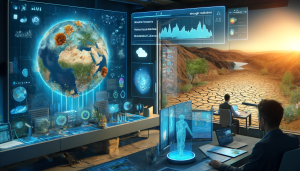 UseCasesFor.ai
UseCasesFor.ai
Choose Topic
 UseCasesFor.ai
UseCasesFor.ai
AI Use Cases
A collection of over 250 uses for artificial intelligence
A continually updated list exploring how different types of AI are used across various industries and AI disciplines,including generative AI use cases, banking AI use cases, AI use cases in healthcare, AI use cases in government, AI use cases in insurance, and more

Sign up
to receive a PDF containing all the use cases and stay updated with the latest AI trends and news (you can always unsubscribe)
Drought prediction

Introduction
AI and ML have been widely used in various domains and environmental industry is no exception. There is one of the most important applications of these technologies which is drought prediction. Water scarcity due to droughts affects the ecosystems, agriculture and human populations throughout the globe. Effective and proper prediction of the drought helps in taking preventive and control measures in advance. When supplied with historical as well as real time data, the artificial intelligence and machine learning algorithms have been found to be effective in predicting drought situations thus allowing the environmental industry to be well equipped and adaptive.
Challenges
The problem of drought forecasting is associated with a great number of difficulties. First, drought is a multifaceted issue that is determined by many factors such as precipitation, temperature, soil moisture and evaporation among others. This entails collecting and organizing large amounts of data which may be of different types. Second, conventional statistical models are inadequate for handling the complex interconnections of these variables. Third, climate change is also introducing another level of variability, thus, it is hard to expect the same trends as before. Finally, insufficient data sets especially in most parts of the world make it difficult to come up with a good data set for training the predictive models.
AI Solutions
These challenges are addressed by AI and ML which provide new approaches to the problem. ML algorithms are capable of working with large amount of data which are multi-dimensional and able to recognise complex and non-linear relationships. It has the capability of learning from historical as well as the real time data to make future demands’ demand conditions estimation. For example, neural networks and support vector machines have been applied to the prediction of droughts with a fair degree of success. In the same way, AI can assist in managing risk that is brought about by climate change. For instance, there is a possibility of using deep learning models where the models are trained with climate models and then make forecasts of future conditions for different conditions. Furthermore, there is a possibility of applying AI in data deficiency through such strategies as data augmentation and transfer learning. For instance, NASA together with the European Space Agency have adopted the use of artificial intelligence and machine learning in drought prediction.
Benefits
There are numerous advantages of incorporating AI and ML in the prediction of droughts. Some of the advantages are as follows: enhanced prediction precision, forecasting and warning in good time hence minimizing effects of droughts. It also has the capacity of dealing with large quantity of data as well as performing the prediction process with the help of artificial intelligence, thereby reducing time and cost. It also enables the incorporation of multi-variate data such as satellite images and climate models to aid in the prediction process. In addition, AI can assist in determining the effects of increasing temperature on the frequency of droughts which will go a long way in shaping climate change policies and adaptation measures.
Return on Investment
It is rather difficult to determine the specific ROI for AI in drought prediction as the benefits are delayed and sometimes indirect. The benefits of early warning and response are staggering and can significantly minimize the effects on agriculture, water supply and human health. Furthermore, the information provided by AI also possesses high value as it helps in making policies and planning. According to the World Resources Institute, every dollar invested in early warning systems such as drought prediction can generate thirty six dollars of economic returns.